Author: FRANCESCO; Compiled by: Lynn, Mars Finance
I have never been on my Twitter timeline I’ve seen so much anti-Ethereum propaganda.
Every other day there is a new Layer 1 that is suspected to be the "Ethereum killer", but Ethereum doesn't know it, so it remains undeterred Instead, focus on your own growth and improvement
This commitment to progress is reflected in the recently announced2024 Ethereum Roadmap< /strong>, focusing on key developments that promise to enhance scalability and user experience.

Among them, EIP-4844 was finallydated, which will make it easier for Layer 2 to release data on Ethereum.
While competition becomes fierce, these new ERCs and EIPs will greatly improve Ethereum’s scalability and user experience.
Let's take a closer look at these exciting updatesincluding ERC-4337, EIP-4844, EIP-3074, and EIP-5003.
ERC-4337: Revolutionizing smart contract wallets
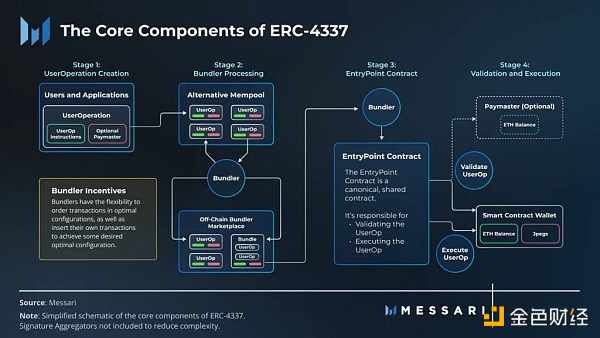
The launch of the ERC-4337 standard is a major leap forward in the evolution ofsmart contract wallets.
This improvement introduces a novel concept called "account abstraction".
ERC-4337 is anAccount Abstractionproposal that completelyavoids the need for consensus layer protocol changes. Rather than add new protocol functionality and change the underlying transaction type, the proposal introduces a higher-level pseudo-transaction object called UserOperation.
More information about ERC-4337: https://twitter.com/johnrising_/status/1629470535397539840
Traditionally, Ethereum accounts are divided into externally owned accounts (EOA) and smart contract accounts. However,User-operated EOA often poses challenges in terms of usability and security.
ERC-4337 blurs these boundaries and allows users to interact with smart contracts more intuitively.
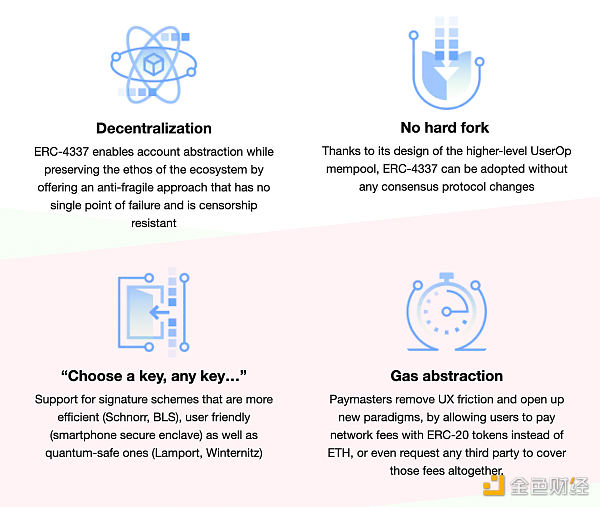
The way users interact with Ethereum needs to adapt to the complexity of the environment. We've seen the emergence of solutions based on account abstraction, such as Creso Wallet and Avocado Wallet .
The introduction of ERC-4337 will lay the foundation for a series of improvements in wallet design and reduce complexity for end users.
Besides this, ERC-4337 greatly improves the end-user experience and enables new possibilities such asGasless transactions or social interaction Login and password recovery.
The main features of ERC-4337 include:
Enhanced Security: By integrating more complex logic into the wallet, users can Set transaction conditions, such as multi-factor authentication or daily spending limits.
User-friendly: It simplifies interaction for non-technical users, making the Ethereum ecosystem easier access.
Pay Gas fees in tokens: Users can pay transaction fees using tokens other than ETH , thereby increasing convenience.
EIP-4844: Improving Layer 2 Efficiency
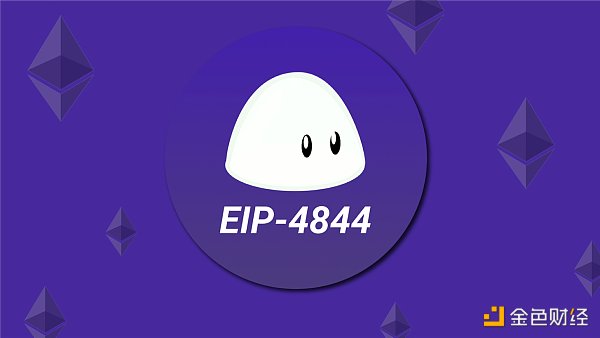
Why EIP-4844: Create a cheap place for L2 solutions to publish data on Ethereum and significantly reduce the overall transaction fees users pay on L2.
Problem:The amount of data generated by L2 continues to increase. If there was a way to publish this data cheaply, it would immediately reduce the transaction fees the network charges users.
Solution: New transaction format for "transaction carrying blob". It contains a lot of data that the EVM execution cannot access, but can access its promises. Rather than having the full content embedded into the body of the text, the content of the blob is spread separately as a "sidecar".
EIP-4844, often referred to as "proto-danksharding", is a major step toward solving Ethereum's scalability issues. It introduces a new transaction type that allows for “shard blobs” – temporary data that can be consumed by layer 2 solutions such as rollups.
EIP-4844 introduces a new transaction type to Ethereum that accepts "blob" data and persists it in beacon nodes for a short period of time.
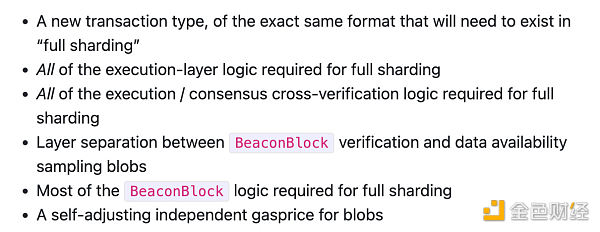
Sharded blocks do not contain transactions executed in Ethereum blocks, but only "data blocks", and L2 is responsible forusing this data space to create secure and more secure Scalability experience.

The important thing about EIP-4844 is that itsvalue will be passed on to users, as we will all be able to benefit from lower L2 fees.
Why is L2 cheaper?
EIP-4844 Separate transactioncomputation and storage fees< /p>
L2 will use a different function to submit "blobs" to Ethereum.
They do not use "CALLDATA" to permanently store data, but use blobs which will is trimmed after a predefined period of time.
The data block does not have to be available forever but rather for a certain period of time (e.g. 1-3 months), long enough AllowL2 to ensure at least 1 honest participant reconstructs the state and challenges or replaces the bad sequencer. The data is then pruned.
EIP-4844 allows Rollups to initially scale to 0.25 MB per slot and provides a separate fee market for blobs, making fees very low and thus significantly Reduced scaling ofRollups.
Read: The deal will be 10 times cheaper.
Potential impacts of EIP-4844 include
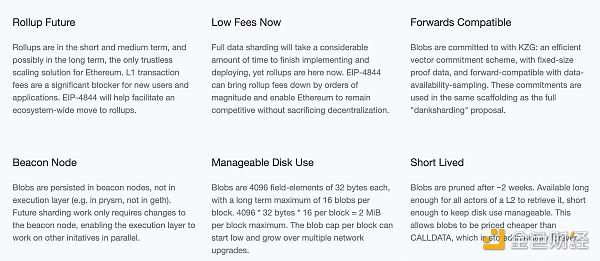
- < p style="text-align: left;">Reduced Tier 2 Costs: Encourage wider adoption by making Tier 2 solutions more economical by reducing data costs.
Increased transaction throughput: This can lead to a more scalable network, per second Able to process more transactions.
Enhanced User Experience: With faster and cheaper transactions, overall Ethereum users The experience is significantly improved.
I wrote a long article about this not long ago:
< p style="text-align: left;">
All Ethereum L2 fees will become cheaper due to EIP-4844EIP-3074: Simplifying Transactions

EIP - 3074 is a new primitive that will open the door to a more seamless user experience on Ethereum without additional trust assumptions.
EIP-3074 introduces fundamental changes tohow Ethereum transactions are authorized and executed. The proposalallows users to authorize third parties to perform transactions on their behalf using a new type of operation.
EIP-3074 aims to update Ethereum's EOA so that they can delegate control to smart contracts - Allow smart contracts Approve transactions originating from user accounts.
In practice, EIP-3074 will allow complex operations to be performed with a single signature without the need for multiple approvals, thus greatly improving improves the user experience and allows complex operations to be performed seamlessly.
End users will be able to send batch transactions, expired transactions, etc.
More information about EIP-3074: https://twitter.com/lightclients/status/1371911245561917441
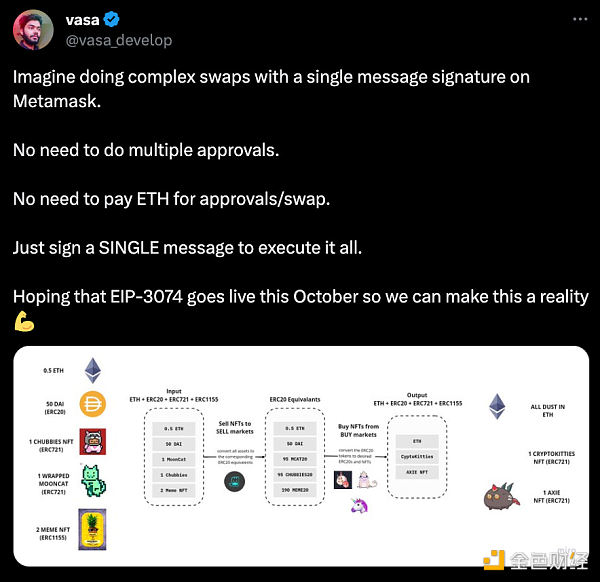
However, to achieve this, the Ethereum protocol needs to be modified to use two new EVM "opcodes": AUTH and AUTHCALL .
As a result, EIP-3074 is generally not favored compared to other account abstract proposals such as EIP-4337.
Learn more about concerns about this EIP:
https://twitter.com/scupytrooples/status/1418441829314220032
Nonetheless, EIP-3074 will introduce new use cases such as:
Smart Contract Wallet: With wallet recovery solutions you will never lose again Funds
Batch transactions: Save gas costs
- < p style="text-align: left;">Automation: Automate transactions with smart contract accounts
Benefits of EIP-3074 include:
Simplify user interaction: It is especially beneficial for complex DApp interactions, reducing user operation steps and gas costs.
Improving developer flexibility: This enables more creative and efficient smart contracts design.
Potential Security Enhancements: While it introduces new security considerations, it also provides opportunities for stronger security mechanisms.
EIP-5003: Network resource optimization
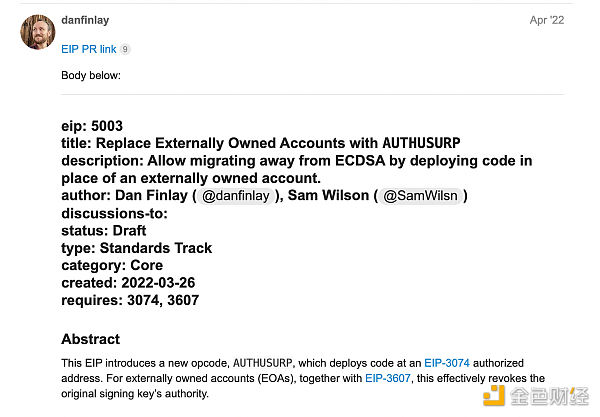
The proposal integrates well with EIP-3074, which provides an "
opcode" for delegating
EAO signing rights to smart contracts. While EIP-3074authorizes the smart contract,EIP-5003 completely completes the signing key of the Ethereum EOA account. Migrate to a smart contract account.

Only limited application of EIP-3074 will create new attack vectors around authorization of smart contracts.
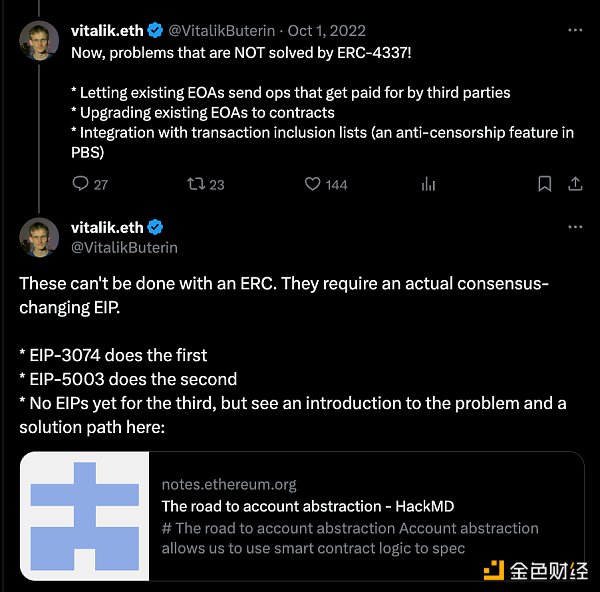
Although EIP-5003 has received less publicity, it plays a vital role in improving the efficiency and security of the Ethereum network.
The expected advantages of EIP-5003 are:
Improved Security: This EIP is combined with EIP-3074, addressing its shortcomings and ensuring that accounts The migration of abstractions does not create new attack vectors.
Migration from EOA: This EIP is the final migration from EOA.
Conclusion: Ethereum for the future
While Ethereum's development is generally consideredto be slow and controlled to prioritize security,Ethereum is not sitting idle, only It is not correct to observe and evaluate its technology based on the situation at each specific moment, because it is always changing. Continuously develop and improve.
In particular, Ethereum’s 2024 roadmap sets out a clear vision for the future, and promises to address scalability, security key areas such as security, accessibility and availability, and future-proofing the network.
We are focused on redefining how users interact with Ethereum, moving from EOA accounts to more flexible smart contract wallets.
The implementation of ERC-4337, EIP-4844, EIP-3074 and EIP-5003 all play a key role in this evolution:< /strong>
ERC-4337 Revolutionized by account abstraction A smart contract wallet that provides enhanced security and user-friendliness. The standard aims to significantly simplify the user experience and expand accessibility within the Ethereum ecosystem.
EIP-4844 , or "proto-danksharding", is a 2nd A breakthrough in layer solution efficiency. By introducing a new transaction format for transactions carrying blobs, it is expected to reduce transaction fees and increase throughput, allowing end users to benefit from more affordable and faster transactions.
EIP-3074 and EIP-5003 together represent simplified transactions and an important step in optimizing network resources. While EIP-3074 introduced new operational capabilities for authorizing transactions, EIP-5003 complements it by transitioning signing permissions from externally owned accounts (EOA) to smart contract accounts, thereby enhancing network security and efficiency.
As Ethereum continues to innovate and improve, it will continue to fight for its relevance in the face of fierce competition.
The main purpose of this article is to inspire readers to view Ethereum as a growing and evolving network rather than a static network, Actively strive to be future-proof with emerging technologies and alternatives.
We will continue to monitor the implementation of the EIP and how Ethereum will develop throughout the year.
 JinseFinance
JinseFinance
 JinseFinance
JinseFinance JinseFinance
JinseFinance JinseFinance
JinseFinance JinseFinance
JinseFinance JinseFinance
JinseFinance JinseFinance
JinseFinance JinseFinance
JinseFinance JinseFinance
JinseFinance JinseFinance
JinseFinance Ftftx
Ftftx